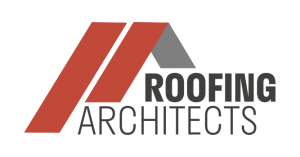The Twenty-Five “C’s” of Roofing
It’s hard to believe, but there are well over twenty-five roofing industry words that start with C. A more important fact is all twenty-five words are important roofing terms. But what do the words mean?
#1 – The Council of American Building Officials
A commonly used roofing “C” word is the acronym CABO which stands for The Council of American Building Officials. CABO merged with The International Code Council (ICC) not too long ago, and the ICC is now a nonprofit association that provides building safety solutions. These solutions are in product evaluation, accreditation, certification, codification, and training. Just as important, ICC develops the codes and standards that worldwide construction projects are held to in safety and sustainability.
#2 – Cant
Cant strip is a piece of wood that is shaped like a triangle, or it is beveled. It is designed to serve as a gradual transitional plane between the flat surface of a roof deck. It can also used in rigid insulation and on vertical surfaces. In other words Cant is a support roofing material and prevents gaps.
#3 – Cap Sheet
Cap sheet is a proprietary coated sheet with granules used as the top ply of roof membranes. Basically, cap sheet protects against UV, weathering and physical damage.
# 4 – Cellulose
Cellulose is a newer roofing component used in the manufacturing of organic roofing material. It is a complex carbohydrate that is composed of glucose units. It is more commonly known as the main constituent of the plant’s cell wall.
#5 – Chalking
Chalking is used to show the degradation or migration of paints, coatings, or any other material.
#6 – Cladding
Cladding is a material used on exterior wall enclosures. Cladding can make weathered buildings look vibrant again and save in electricity when thermal or insulation issues are used with it.
#7 – Cleat
A roofing cleat is used to secure two components together. It is a metal strip, plate, or metal angle piece.
#8 – Closed-Cut Valley
There are two kinds of closed valleys. There is cut valleys, which are less expensive to install and are the most common; and woven valleys. The closed-cut valley is an application method where shingles on an adjacent slope are cut parallel and trimmed back two inches from the valley centerline. The woven valley shingles run from both roof slopes onto the adjacent slope, alternating with each course.
#9 – Coating
Coating is used with various products, but its use in roofing is to be spread over the surface for protection or decorations. Coatings are generally liquids, semi-liquids, or mastics. They can be applied as a spray or with a roller and cured to an elastomeric consistency.
#10 – Cohesion
Cohesion is the mutual attraction by which the elements or particles of a body or substance are held together.
#11 – Cold Process Built-Up Roof
Cold process built-up roof occurs with a continual but semi-flexible roof membrane. The ply or felts are laminated together with alternate layers of liquid-applied roof cement or adhesive. Then it’s surfaced with a cold-applied coating.
#12 – Combing Ridge
The combing ridge is the finished slate at the ridge of the roof, where the slates on one side stick out beyond the apex of the ridge.
#13 – Composition
Composition roofing is sometimes called asphalt shingles. It is the most common roof used on houses. Composition roofing is one of the lowest in cost and easiest to install.
The roofing uses for composition roofs run from home roofs to apartment buildings and church roofs. Composition roofing is available in many colors, has a flat profile, is algae-resistant, and has cellulose or fiberglass mats coated with asphalt and granules.
#14 – Concealed-Nail Method
This is when you use your asphalt roll roofing application to drive all the nails into the roof and cover with an adhered overlapping course. That way, the nails are not exposed to the weather.
#15 – Conductor Head
The conductor’s head provides direct runoff water through this transition component place between a wall scupper and downspout.
#16 – Coping
Coping is the covering that sits on the top of the wall. It is always exposed to the weather and made with metal or stone. It helps shed water back onto the roof through its sloped design.
#17 – Copper
This is the same type of copper used in cookery, but in this case it provides a natural weathering that is used in metal roofing. Most of the time, it is used in 16 or 20 ounces per square foot in thickness.
#18 – Cornice
The cornice is one of the most decorative roofing pieces. It is a horizontal molding or projected roof overhang.
#19 – Cove
The cove is a sealant material installed where vertical and horizontal planes meet. It helps to get rid of the 90º angle.
#20 – Cricket
A cricket diverts water around chimneys, curbs, and other roof elements. It is raised as a roof substrate or structure.
#21 – Cross Ventilation
In roofing, cross ventilation occurs when the air moves through the roof cavities. This happens when the air moves between the air cavity vents. What’s unique about cross ventilation is the airflow must be uniform. Otherwise, the roof will have hot spots develop in its sheathing, which reduces its efficiency.
#22 – Cupola
A cupola is at the edge, ridge, or peak of the main roof area. It is a small roofed structure.
#23 – Curb
A curb is a raised member that helps support roof penetrations. This includes being used in skylights, mechanical equipment or hatches needed on the roof. It is above the roof’s surface but relatively low in height.
#24 – Cure
Curing a roof means you are processing roofing material to form permanent molecular linkages by exposure to the chemicals, heat, pressure, or weathering.
#25 – Cut-off
A cutoff is a permanent detail that seals and prevents water movement in an insulation system. It basically isolates sections of the roofing system to help disperse the weight of water in one area.
In the end, all of the roofing terms listed above mean you now know what makes up superior roofing products and services. You also know the above materials need to be backed by the finest expert roofing services. When you’re ready to find the roofing professionals near you, we have a secure, fast, and easy way to help you.


